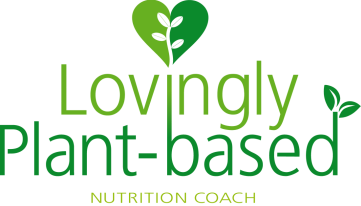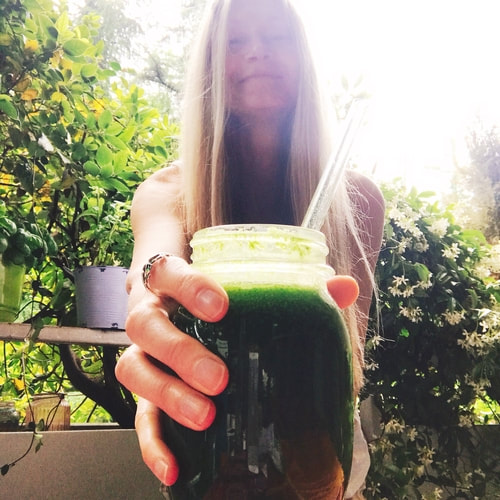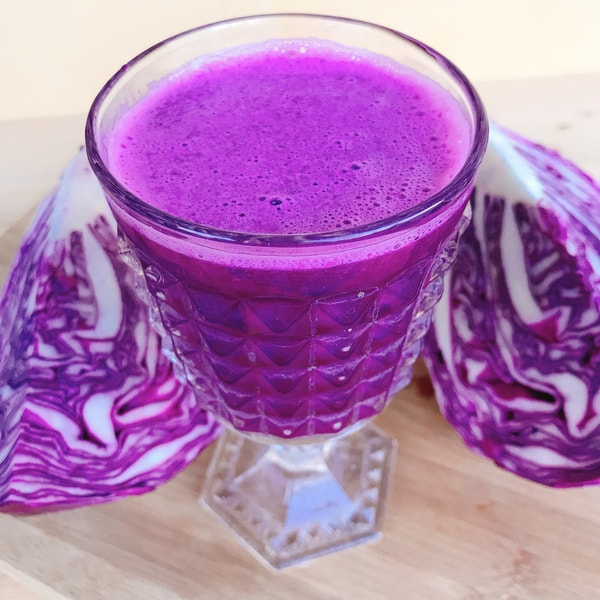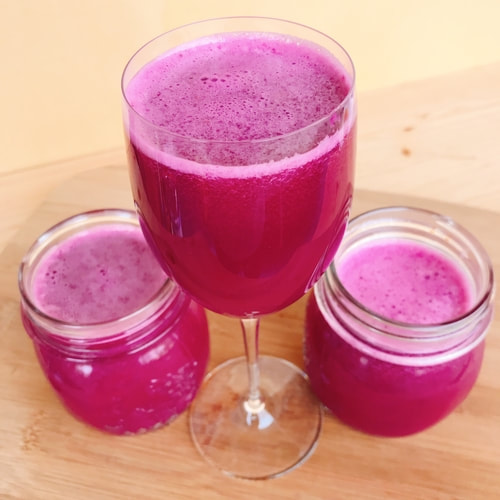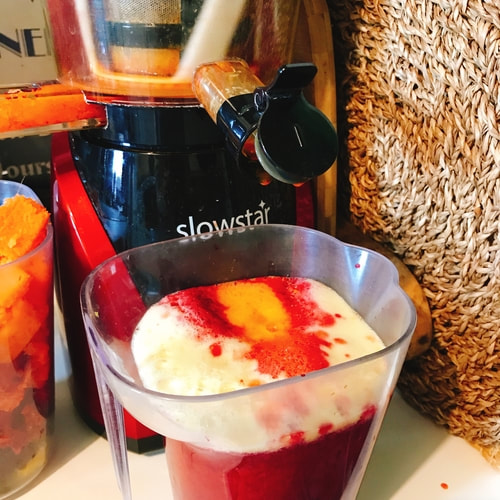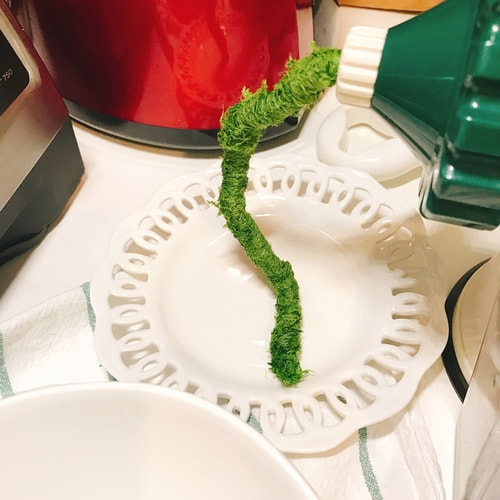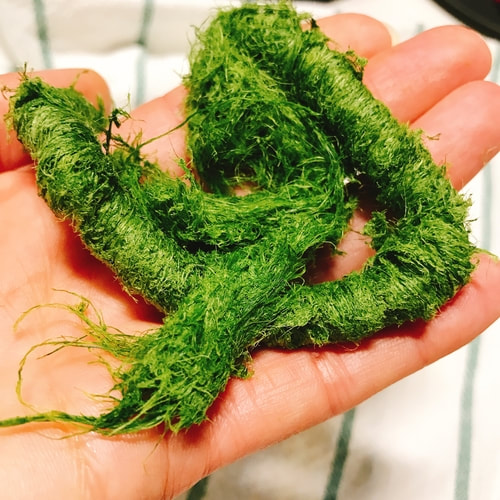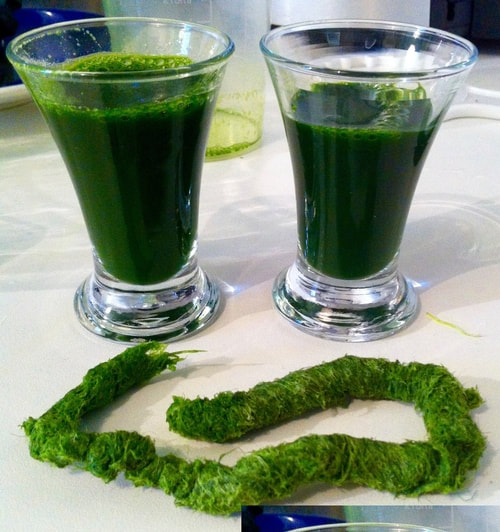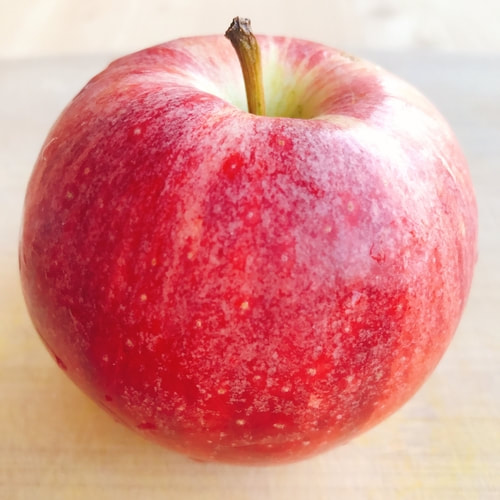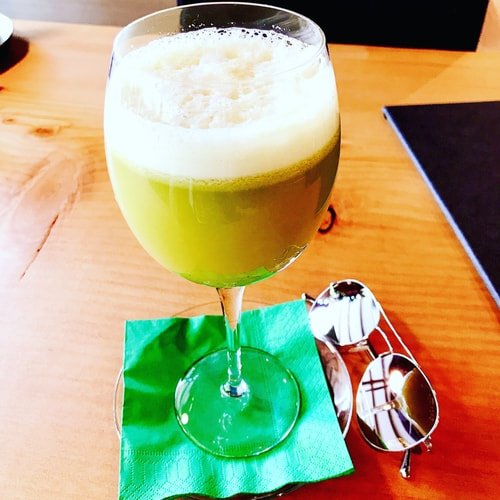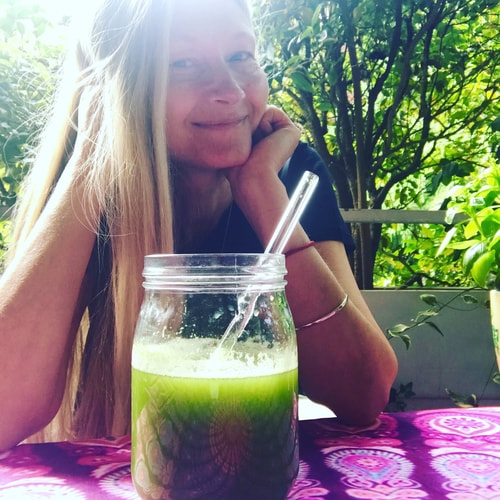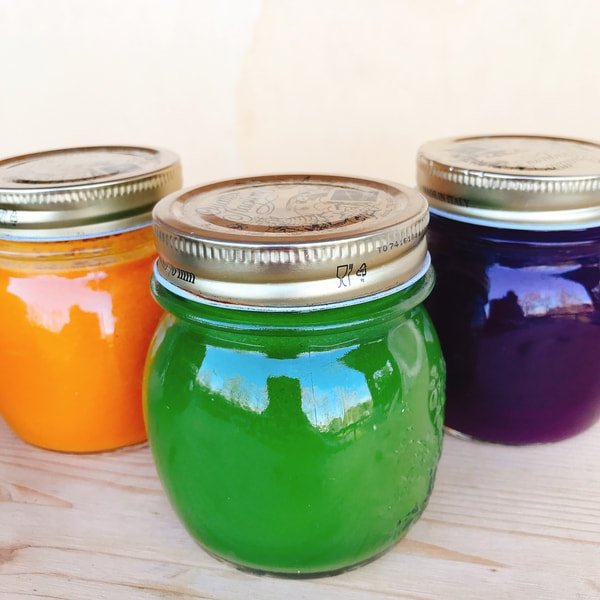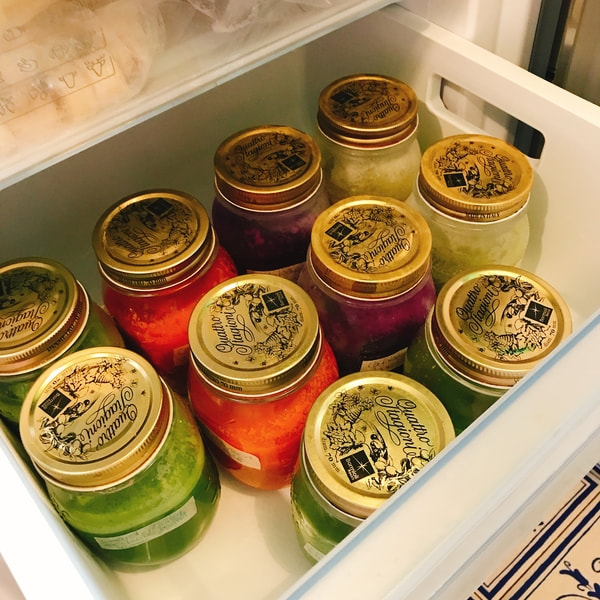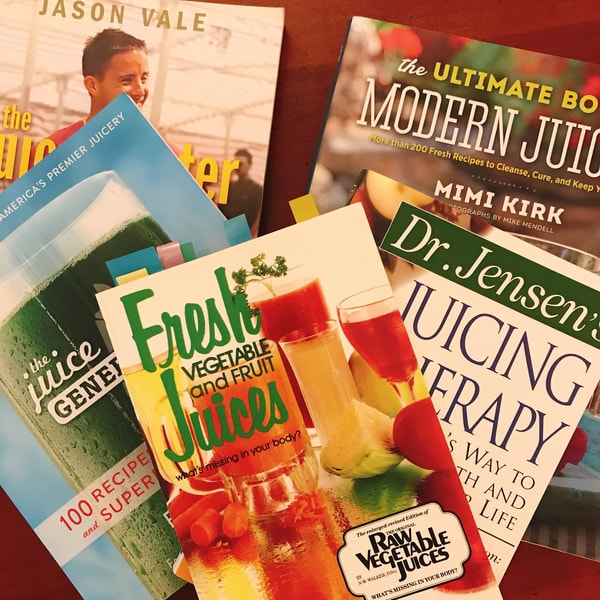Juicing
Flood your body with phytonutrients, in the form of fresh vegetable juices!
This is a really beautiful way of giving your body the gift of live enzymes, chlorophyll, phytonutrients, vitamins, minerals, without it spending time and precious energy digesting everything.
At the bottom of the page there are links to the 'Juicing Pioneers', Max and Charlotte Gerson and Jay Kordich (Juiceman), and the more recent Jason Vale (Juice Master) and Joe Cross (Fat, Sick & Nearly Dead).
I think of juicing as a means of shuttling precious nutrients into my bloodstream in the least time possible because the wonderful thing about juices is that within about 10-15 minutes of consuming a freshly extracted juice, the body has absorbed the nutrients, without having to go through the tiring digestive process of removing all that fibre, which is taxing on the body.
This is what our digestive system is for though, right?
Isn’t that its job, to separate what we need from what is to be discarded? Yes, but if we can help it out every now and then by juicing, then why not?
Juicing may also be helpful for people who are battling disease. They need more nutrition but at the same time need to conserve as much energy as possible for healing. Digestion consumes a lot of energy and a part of the nutrients contained in that lovely apple/carrot/salad that you’ve just eaten, will be taken and used by the body just to digest it. But before you say, ‘Well then I might as well eat a burger,’ hold on…if the body needs time and energy to digest good, raw food that contains enzymes, it needs MUCH more time and effort to digest enzyme-dead food (anything that has been cooked above 118°F), let alone cooked meat and processed ‘food’.
But isn't fibre supposed to be good for us?
Yes. Absolutely. A diet high in fibre is health-promoting.
Bear with me one minute though.
First of all there are two types of dietary fibre, both of which we need in our diet - soluble and insoluble. Also known as ‘roughage’, fibre sweeps through our colon like a broom, creating bulk, absorbing toxins and aiding elimination (pooping). This is fundamental for good health.
I apologise if you would rather not read about this bodily function alongside the lighter and more pleasant topic of juicing, but it’s important. If you’re not pooping at least once a day, you need to make some changes. Imagine carrying a big bag of poop around with you and you only get to discard it once a day. Now imagine carrying that bag for two or three days….a week…Nasty right? Now, there is only so much room in our large intestine, aka colon, to store all this toxic waste matter. So our body has a way of reducing ‘the load’; water is extracted from it in order to reduce the volume. And where does this extracted liquid go? Back into our bloodstream. That’s not nice.
So if you’re holding onto days of waste, you’re not doing your body any favours. The saying, ‘better out than in,’ comes to mind.
Bear with me one minute though.
First of all there are two types of dietary fibre, both of which we need in our diet - soluble and insoluble. Also known as ‘roughage’, fibre sweeps through our colon like a broom, creating bulk, absorbing toxins and aiding elimination (pooping). This is fundamental for good health.
I apologise if you would rather not read about this bodily function alongside the lighter and more pleasant topic of juicing, but it’s important. If you’re not pooping at least once a day, you need to make some changes. Imagine carrying a big bag of poop around with you and you only get to discard it once a day. Now imagine carrying that bag for two or three days….a week…Nasty right? Now, there is only so much room in our large intestine, aka colon, to store all this toxic waste matter. So our body has a way of reducing ‘the load’; water is extracted from it in order to reduce the volume. And where does this extracted liquid go? Back into our bloodstream. That’s not nice.
So if you’re holding onto days of waste, you’re not doing your body any favours. The saying, ‘better out than in,’ comes to mind.
Insoluble fibre
The insoluble fibre is the type we cannot digest; those tough fibres that seem to come out the same way they went in. Those stringy bits in celery, the woody parts in artichokes, apple peel, all contain insoluble fibre.
Soluble fibre
Soluble fibre, on the other hand, is that which dissolves in water, hence the name, soluble. It forms a gel and attracts water to the stool, making elimination easier, therefore it’s a great aid for overcoming constipation. Soluble fibre may lower blood cholesterol levels, control blood sugar and aid weight loss. It also feeds the good bacteria in our gut and when our good gut bacteria are happy and flourish, it affects us in a positive way.
But didn’t I just say that juicing removes the fibre?
It removes the insoluble fibre, the tough part, permitting the juice to be digested far quicker than if you had eaten the whole vegetable. The juice still contains soluble fibre though and so even if you’re doing a juice cleanse in which you are eating no solid food whatsoever, you will still be consuming some fibre. If, on the other hand, you are just adding juices to your diet of whole foods, you will be already getting more than enough fibre, since whole fruits and vegetables, nuts, seeds, beans, legumes all contain both soluble and insoluble fibre.
These photos below show the fibre from wheatgrass. We would have a hard time (and a few digestive upsets probably) trying to digest that without juicing it first!
These photos below show the fibre from wheatgrass. We would have a hard time (and a few digestive upsets probably) trying to digest that without juicing it first!
Fruit: to juice or not to juice?
|
Nature created fruit as the perfect package; vitamins, minerals, phytonutrients, soluble and insoluble fibre all working together in perfect symphony as nature intended. The fibre slows down the release of sugars present in the fruit; therefore to avoid a surge of sugar entering your bloodstream at warp speed and spiking insulin, fruit is best eaten whole. However, a piece of fruit added to a green juice to make it more palatable is a good idea if that’s the only way you’ll drink it. I personally add lemons, apples or pears and avoid mixing too many different fruits into my juices. If you’re new to juicing and really need to add fruit, aim for your juice to be at least 60% from vegetables and don't add too many different types of fruit to one juice. Keep it simple.
|
When is the best time to drink juice?Ideally drink juice on an empty stomach or at least 2 hours after eating. For best results, wait for about 20 minutes after your juice before eating. I love starting my day off with a vegetable juice. There are times however when I'll have a fresh juice with my meal if I'm having lunch at my favourite juice bar. In this case the meal is always a salad and yes, the fibre in that salad will slow down the digestion of the juice.
|
Sip & chew your juice
No, I'm not pulling your leg! Chewing your juice might seem like a weird thing to do, but we do this for a couple of reasons:
1. Just because it's a liquid, doesn't mean it's not food. Chewing stimulates the production of saliva in your mouth, which releases enzymes. This prepares the body to receive the incoming food and properly digest it.
2. Sipping, rather than chugging half a litre of juice down, is less of a shock to the digestive system; whether it’s juice or not, you’ll feel better if you drink it slowly. There is something called, ‘gastric dumping’ which can occur in some people when food, especially sugar, moves too fast from the stomach to the upper part of the small intestine. The result can be cramping, dizziness, nausea and the urgent need to find a toilet. This happened to me once many years ago when I was new to juicing. I was in a hurry and drank a huge glass of freshly extracted predominantly fruit and vegetable juice down all at once. I was suffering from digestive issues back then, so that probably contributed to my malaise, however, it was a lesson I don’t want to repeat and now I drink my juices slowly, especially if there’s fruit in them.
1. Just because it's a liquid, doesn't mean it's not food. Chewing stimulates the production of saliva in your mouth, which releases enzymes. This prepares the body to receive the incoming food and properly digest it.
2. Sipping, rather than chugging half a litre of juice down, is less of a shock to the digestive system; whether it’s juice or not, you’ll feel better if you drink it slowly. There is something called, ‘gastric dumping’ which can occur in some people when food, especially sugar, moves too fast from the stomach to the upper part of the small intestine. The result can be cramping, dizziness, nausea and the urgent need to find a toilet. This happened to me once many years ago when I was new to juicing. I was in a hurry and drank a huge glass of freshly extracted predominantly fruit and vegetable juice down all at once. I was suffering from digestive issues back then, so that probably contributed to my malaise, however, it was a lesson I don’t want to repeat and now I drink my juices slowly, especially if there’s fruit in them.
How much juice per day?
Start off gradually. It makes sense that if you’ve never juiced before and then one day you drink little else but juice, you might well spend a fair part of your day on the toilet.
In 'The Ultimate Book of Modern Juicing' Mimi Kirk suggests 8oz (approx. 250ml) 3-4 times a day for someone who is used to drinking fresh juices or is detoxifying. I often drink 16oz (500ml) for one juice, but if you’ve never juiced before, or you don’t do it regularly, 8oz or 250ml once a day is plenty to start with.
In 'The Ultimate Book of Modern Juicing' Mimi Kirk suggests 8oz (approx. 250ml) 3-4 times a day for someone who is used to drinking fresh juices or is detoxifying. I often drink 16oz (500ml) for one juice, but if you’ve never juiced before, or you don’t do it regularly, 8oz or 250ml once a day is plenty to start with.
To store or not to store?
Freshly extracted juice will oxidise very quickly, so ideally you want to prepare it and drink it.
If you only have one moment in the day in which you have the opportunity to juice, but you want to have juices throughout the day, or you have a really early start and so need to prepare your juice the night before, divide it into small mono-use jars, fill them up to the top, screw the lid on tight and put them in the fridge. By filling the jars you’re reducing contact with the air and so there's less oxidation. When I am really busy I often store my juice this way and on occasions I even freeze it. When freezing though, leave space at the top of the jar, or it will break. Been there, done that!
Any juice you store in the fridge ideally needs to be consumed within 24 hours and make sure you 'chew' it well as this will bring it to body temperature.
If you only have one moment in the day in which you have the opportunity to juice, but you want to have juices throughout the day, or you have a really early start and so need to prepare your juice the night before, divide it into small mono-use jars, fill them up to the top, screw the lid on tight and put them in the fridge. By filling the jars you’re reducing contact with the air and so there's less oxidation. When I am really busy I often store my juice this way and on occasions I even freeze it. When freezing though, leave space at the top of the jar, or it will break. Been there, done that!
Any juice you store in the fridge ideally needs to be consumed within 24 hours and make sure you 'chew' it well as this will bring it to body temperature.
Charlotte Gerson
This page would be incomplete without mentioning The Gerson Therapy by Max Gerson, Charlotte's father.
Go here for more info: The Gerson Institute
Go here for more info: The Gerson Institute
Jay Kordich - The original 'Juiceman'
His passion for juicing is contagious!
Joe Cross
'Fat, Sick and Nearly Dead' is a great documentary following the 60-day juicing journey of Joe Cross and his endeavour to lose weight. Check out his website here.
Some books
There are many excellent books on juicing and as you will soon notice, it’s not a new-age fad.
I thoroughly recommend Dr. Norman W. Walker’s little book published in 1970, ‘Fresh Vegetable and Fruit Juices: What's Missing in Your Body?’ It's a gem. At the back of the book there are 87 different juice ‘formulas’ as he calls them, with specific measurements.
I thoroughly recommend Dr. Norman W. Walker’s little book published in 1970, ‘Fresh Vegetable and Fruit Juices: What's Missing in Your Body?’ It's a gem. At the back of the book there are 87 different juice ‘formulas’ as he calls them, with specific measurements.
|
|
Jason Vale, the ‘Juice Master’, offers a fun, but very knowledgeable approach to juicing through his books, videos and website. The book, ‘The Juice Master - Turbo-charge your life in 14 days’ was one of my first juicing books, back in 2005. There are some recipes containing fish, however it’s an easy and useful book if you’re new to juicing or simply want to kick-start your healthy habits.
|
|
|
'The Juice Generation' by Eric Helms is packed with 100 recipes, information and helpful tips to help you sail through a juicing cleanse and any juicing dilemmas you might have, or simply introduce you to the world of juicing.
|
|
|
And last, but not least, Mimi Kirk, the Queen of raw, has a gorgeous book called, ‘The Ultimate Book of Modern Juicing’. This is a fabulous, up-to-date book with chapters dedicated to the benefits and history of juicing, equipment, FAQs, health benefits of specific plant foods, and a plethora of wonderful recipes. Pleasing to the eye, thanks to the full-page photographs, it’s a pleasure to read, a true ‘Juicing Encyclopaedia’!
|
So now you should be more than ready to start juicing! Once you start you'll wonder why you waited so long!
Have fun & enjoy!
Have fun & enjoy!
Copyright 2021 Nicki Perkins | www.lovinglyplantbased.com All rights reserved.
All content, videos and images found on lovinglyplantbased.com may not be reproduced or distributed, unless permitted in writing by Nicki Perkins, lovinglyplantbased.com
All content, videos and images found on lovinglyplantbased.com may not be reproduced or distributed, unless permitted in writing by Nicki Perkins, lovinglyplantbased.com
